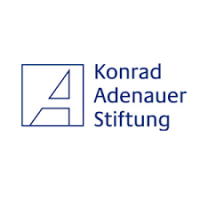The European View for better Collaboration between Latin America and Europe against Drug Trafficking

The illicit drugs business has undergone significant changes in the last decade and a half. One major change relates to the nature of the cocaine market.1 Once concentrated in Colombia, the cocaine industry has expanded throughout the Latin American region and a significant proportion of the cocaine output is now being smuggled to Europe.Another change relates to the traditional distinction between producer, consumer and transit countries. Today, both Europe and Latin America are regions where illegal drugs are produced and consumed on a broad scale. The traditional trafficking routes originating from the Andean sub-region have become more “fluid”, with new transit corridors being used for the movement of cocaine, and with considerable ‘reverse flows’ of synthetic drugs being trafficked from Europe to Latin America. As a result, the links between criminal groups in Latin America and Europe have also been intensifying.2 The increasing influence of these organized criminal networks represents a growing threat to both Europe and Latin America. Apart from the corruptive effects of drug trafficking and organized crime on the broader political and socio-economic environment, a major European cause for concern is the ties between Latin American drug traffickers and terrorist networks in the European neighbourhood. In light of this growing Latin America-Europe narco nexus, there is a need to strengthen inter-regional anti-narcotics cooperation.
O negócio de drogas ilícitas sofreu mudanças significativas na última década e meia. Uma mudança importante diz respeito à natureza do mercado de cocaína.1 Antes concentrada na Colômbia, a indústria da cocaína se expandiu por toda a América Latina e uma porção significativa da produção dessa droga está, agora, sendo contrabandeada para a Europa. Outra mudança diz respeito à distinção tradicional entre os países produtores, consumidores e de trânsito. Atualmente, tanto a Europa quanto a América Latina são regiões onde as drogas ilegais são produzidas e consumidas em grande escala. As rotas de tráfico tradicionais provenientes da sub-região andina tornaramse mais “fluidas”, com novos corredores de trânsito sendo usados para o movimento da cocaína e consideráveis “fluxos reversos” de drogas sintéticas traficadas da Europa para a América Latina. Como resultado, as relações entre grupos criminosos da América Latina e da Europa também se intensificaram2.O aumento da influência dessas organizadas redes criminosas representa uma ameaça crescente tanto para a Europa quanto para a América Latina. Além dos efeitos corruptivos do tráfico de drogas e do crime organizado no ambiente político e socioeconômico mais amplo, causa grande preocupação à Europa, o vínculo entre traficantes de drogas latino-americanos e redes terroristas na circunvizinhança europeia. À luz desse crescente narco-nexo entre a América Latina ea Europa, é necessário fortalecer a cooperação inter-regional em matéria de combate aosnarcóticos.
